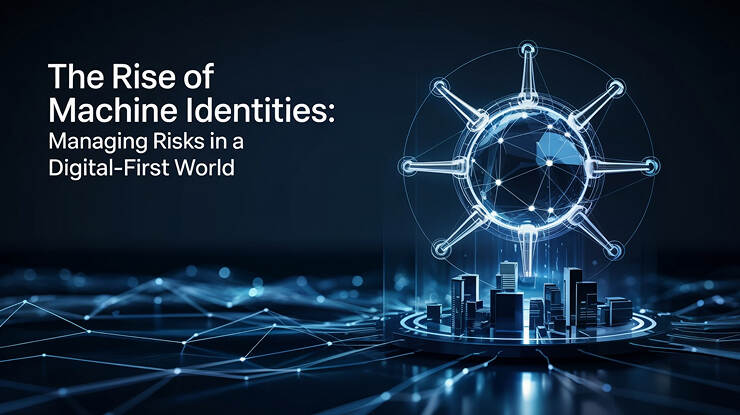In today’s digital-first world, businesses are facing a growing cybersecurity challenge: managing the surge in machine identities alongside traditional human users. As organizations increasingly rely on connected devices, automated tools, and cloud services, machine identities are becoming just as common — and just as critical — as people in the system.
With this shift comes a new category of risk that many companies are still catching up to. Poor oversight of non-human access points can leave networks open to unauthorized entry, data leaks, and even full-scale attacks. To stay ahead, cybersecurity strategies must evolve to treat these identities with the same level of scrutiny as human ones.
What Are Human and Machine Identities?
Human identities are familiar — usernames, passwords, biometric scans — all designed to verify and control who can access specific resources.
But modern systems don’t just rely on people anymore. Machine identities represent the digital credentials used by devices, applications, services, and automated tools to authenticate and communicate securely. From cloud workloads and APIs to IoT devices and scripts, these identities now make up a large portion of the access activity within an organization’s environment.
In fact, in many organizations, machine identities now outnumber human ones — and that’s where complexity begins to grow.
Why the Identity Blur Creates Security Gaps
As the number of non-human identities increases, so does the opportunity for misuse. Each unmanaged or misconfigured identity becomes a potential entry point.
The real challenge? Most identity management systems were originally designed with only people in mind. As more devices and apps start accessing sensitive resources, many of them slip through without proper oversight. Expired certificates, unused credentials, and overly permissive access are just a few of the weak spots.
This identity blur — between humans and machines — leads to serious visibility gaps and opens the door to threat actors.
Critical Threats Emerging from Identity Overlap
1. Unauthorized Access
When credentials used by machines are not properly secured, attackers can exploit them to bypass human authentication and access sensitive data or systems.
2. Botnet Exploitation
Unprotected devices — especially IoT — can be hijacked and added to botnets. These are then used to launch DDoS attacks, spread malware, or harvest data at scale.
3. Insider Misuse
It’s not always outsiders. Internal users may abuse unattended machine identities to gain access they shouldn’t have, especially in highly automated environments.
4. Supply Chain Exposure
When organizations integrate third-party tools and devices, they may inherit risks. If these systems have weak or exposed credentials, attackers could exploit them to move laterally within the network.
Keeping Human and Non-Human Access in Check
To protect systems from identity-related risks, organizations must modernize how they manage access across all digital entities — human or otherwise.
✅ Centralized Identity Governance
Use unified identity management tools that can track, manage, and secure both people and machines. This allows for better visibility, policy enforcement, and quick response to anomalies.
✅ Zero Trust Principles
Assume no user or device is inherently trusted. Validate every access request — continuously — whether it comes from a person, application, or device.
✅ Automated Discovery & Monitoring
Deploy tools that can automatically identify and track machine identities across cloud, on-prem, and hybrid environments. Automation ensures consistency and reduces blind spots.
✅ Frequent Access Reviews
Regularly audit who (or what) has access to what. Deactivate stale credentials and adjust permissions based on actual usage — not assumptions.
✅ Strong Authentication & Encryption
Use strong cryptographic practices to secure identity communications. And where possible, implement multi-factor authentication — even for automated systems — to reduce the chance of unauthorized access.
Conclusion
The rise of machine identities marks a major shift in how businesses must think about cybersecurity. With more digital agents accessing systems than ever before, it’s no longer enough to focus only on human users.
By adopting modern identity strategies — built around visibility, automation, and zero trust — organizations can reduce their attack surface and stay protected against growing threats.
In the end, securing your network isn’t just about knowing who’s logging in — it’s also about knowing what’s logging in, and making sure it’s exactly who (or what) it claims to be.


